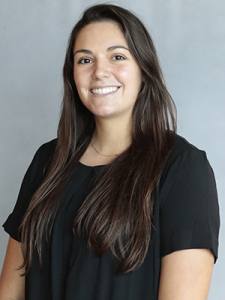The announcement of an estimated
5,000 to 15,000 new Apple employees entering to the Robinson Ranch area in Northwest Austin in the coming years was met with concern by Teri Burchfield, owner and director of Four Seasons Community School, a local day care.
“We turn people away every day,” Burchfield said of those looking for child care without a waitlist.
Apple
announced plans Dec. 13 to invest $1 billion to expand its Northwest Austin operations center by building a second campus. The decision has been lauded by city and county officials for being beneficial to economic activity and
local tax levies.
However, the influx of new residents could stretch Northwest Austin’s already
sparse child care resources even thinner. In Austin City Council District 6, where the new campus will be located, there are currently 10 child care centers and a population of 8,569 children, according to a United Way of Austin report.
“There are long waitlists even for those who can pay for infant and toddler care,” said Cathy McHorse, vice president of United Way of Austin’s Success by Six program. “We have an insufficient supply to meet the needs of our population. That is likely to present a challenge, especially in [Northwest Austin] as the population booms out there.”
Four Seasons Community School is just two miles away from Apple’s current Northwest Austin campus and about 3 miles away from the site of its second campus, set to be
completed in 2021.
Burchfield said the daycare center’s close proximity to large tech companies such as National Instruments, Dell and Facebook has proven fruitful for her business, but she is limited by how many children she can accommodate at once.
“We always have a waitlist and every classroom right now is on a waitlist,” she said. “Our zero to two age group is about a six to twelve month wait.”
Burchfield said the area’s rush hour traffic has also made child care access challenging. She lives six miles away from the school and said she spends thirty to forty minutes commuting. Her clients face similar mobility challenges.
“When there's an accident, the impact on [the parents] is huge,” she said.
Jimmy Flannigan, City Council member for District 6, told
Community Impact Newspaper that developments like Apple's proposed project can help spur transportation infrastructure improvement.
“What’s exciting about the build out of Robinson Ranch—amongst the things that are concerning because a lot of growth can also be hard to accommodate—is the opportunity to ... [add] a level of density that would support actual substantive transit services for District 6,” he said.
The U.S. Census estimates that 62 percent of all children under the age of six in Austin have parents in the workforce. McHorse said child care access will need to keep pace with the city’s growth.
“In effort to keep [care] affordable, the staff tend to be the ones who get the short end of the stick [with low wages] or the parents pay more costs,” McHorse said. “That's what makes child care such a challenging issue. You can't rely on those market forces [of demand]. ”
Various measures to improve child care access are being explored by Austin City Council, McHorse said. They include city budget allocations to pre-k programs at Austin ISD; city staff research on incentive programs and partnership options for daycares; and land-use code modifications to make building new centers easier.
Additionally, McHorse said if Apple added child care facilities onsite in partnership with a private provider or a nonprofit, it could help ease the burden on Northwest Austin families.
“[Having onsite childcare] would be a really incredible gift to the community because of the need that [Apple is] going to add,” she said.
Additional reporting by Amy Denney.





